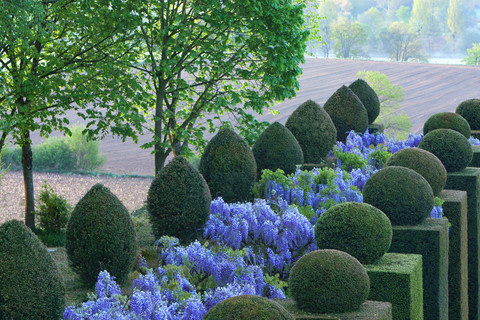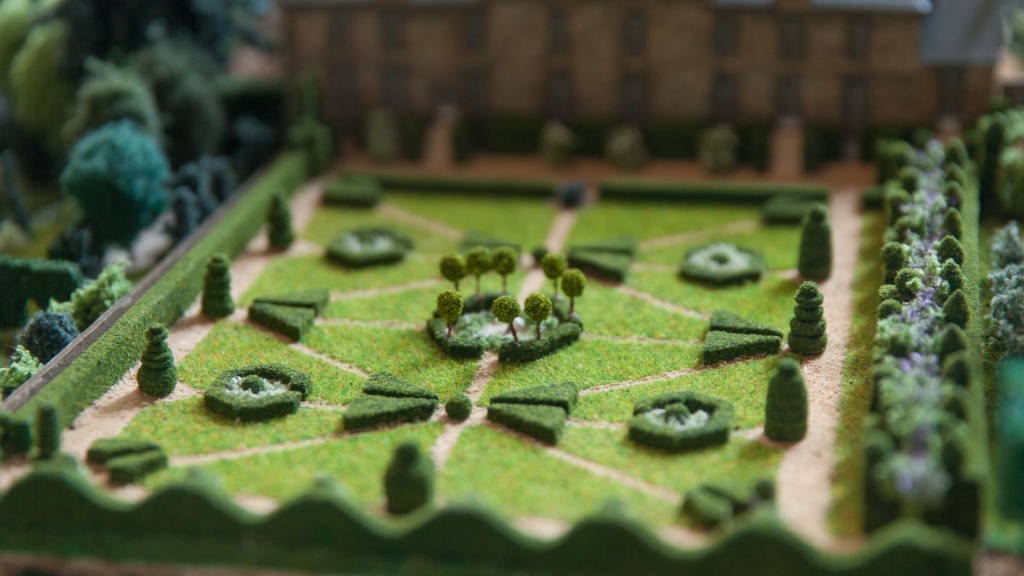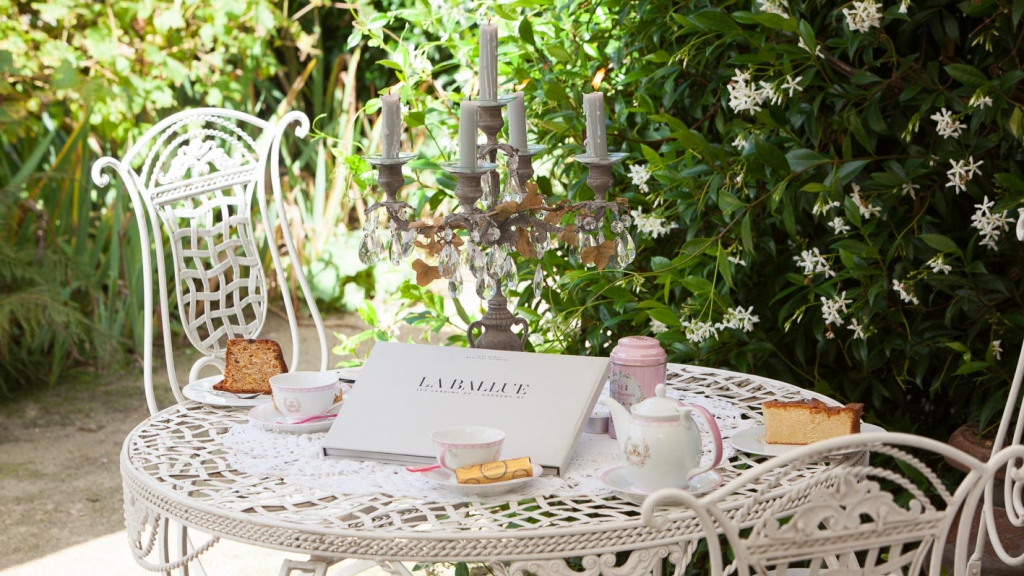History
What is the History of the Château de la Ballue and its Gardens ? Built in 1620, the château de la Ballue was, at the begining of the 19th century and in the middle of the twentieth, a priviledged place for the writers and the artists. Although la Ballue was left alone for 30 years – its formal gardens had returned to a wild meadow when in 1973 started their restoration – reinterpreted and with a new design,- they regain nowdays, their original nature besides a contemporary garden inspired by the 17th century baroque play with perpective and light and shadow.
Separated from the formal garden by the wisteria alley supported by 12 colums of taxus, the side garden was designed by two futurists architects François Hebert Stevens & Paul Maymont in the purest mannerist style.
An initiatory path, a green maze which can only be understood at the end of it, so man can have a global vision of it and which offers 13 surprises from the mysterious chamber to the musical one, from the one covered with fern, to the booby trap chamber then to the sented chamber, the green theatre to Diana’s temple, and the maze by itself.








